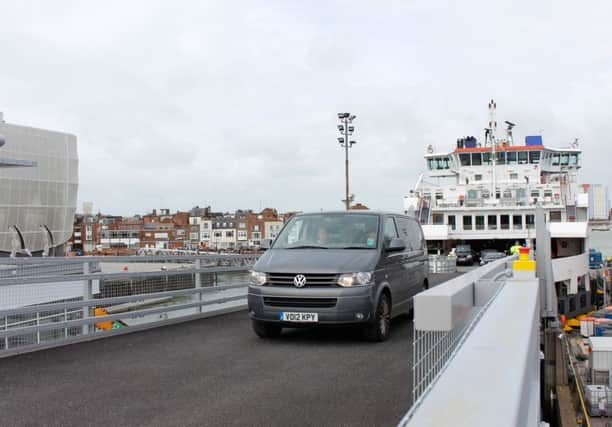£45m works sees '¨better punctuality on busy ferry route


A report has gathered statistics from August 2017, known to be the busiest month of the year for the ferry firm. The figures show that new terminal improvements have made a significant difference to punctuality on this specific route.
Compared to August 2016 levels, the number of sailings arriving on time increased by more than a third.
Advertisement
Hide AdAdvertisement
Hide AdThe new features at each terminal include the double deck boarding ramps. The ramps allow staff to load and unload the flagship St Clare quicker.
Cars and small vans embark and disembark from the upper deck while lorries, coaches and other large vehicles use the lower deck.
This new system is stated to have reduced turnaround time to 15 minutes.
Chief executive at Wightlink, Keith Greenfield, said: ‘We thank our customers and neighbours for their patience during our construction work at both Portsmouth and Fishbourne.
Advertisement
Hide AdAdvertisement
Hide AdThe temporary disruption to our services has been worth it because punctuality has improved. We are delighted that the majority of our sailings are now running on time, even on some of the busiest days during the holiday season, and will welcome our new ship Victoria of Wight in summer 2018.’
With Wightlink’s new customer building in Portsmouth nearing completion, more improvements for the route lie ahead as plans for a new terminal entrance at Fishbourne to reduce queuing has been announced.
Isle of Wight Council leader Dave Stewart said: ‘I am pleased the new two-tier boarding ramps at Fishbourne and Portsmouth are now working well and helping to make the service more efficient.’